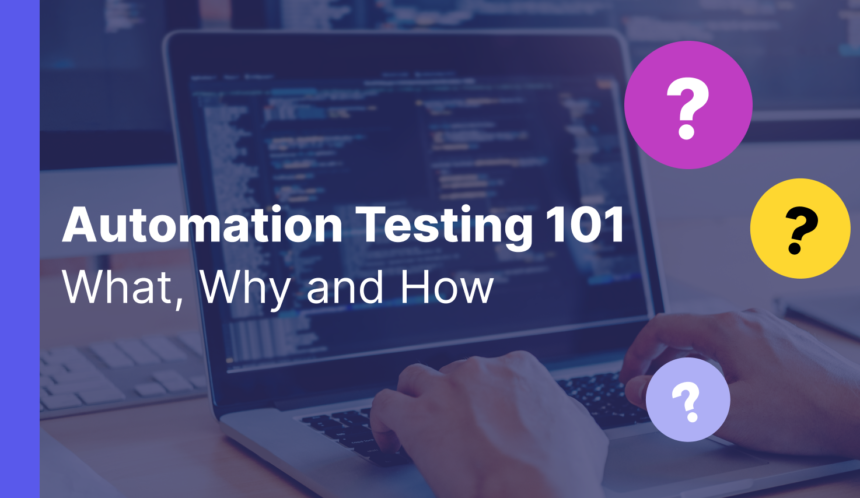Automation testing is considered a crucial component of the current software development ecosystem concerned with the rapidly changing software development landscape, and now more than ever, it is treated with high regard in terms of application quality, reliability, and efficiency. As businesses aim to release software products of good quality at a faster pace, there has been an increase in demand for automation testers. This ultimate guide provides you with a step-by-step road map to start your automation testing training and thus, open the doors of a prestigious career.
1. Lay the Foundation With Manual Testing Fundamentals
Before you get into different areas of automation testing, it is very important to understand the basics of manual testing principles and methodologies. The basics of manual testing are the foundations on which automation testing is laid and getting grounded with the real basics will give you a great understanding of the testing, its objectives, and the logic.
First, get the basics of testing i.e. what the Test case is, What the Test Scenario is, Introduction to Test Planning and Test Execution are like. Learn, Functional, Nonfunctional, Regression, Exploratory testing. Also, learn basic software development life cycles (SDLCs) and their impacts on the testing.
Common sense is invaluable at this stage. Contribute to manual testing projects maybe as an intern, try with your projects, with Open-Source contributions. This bug-finding experience will not only make your concepts clear about manual testing but also contribute to critical thinking, attention to detail, and problem-solving capabilities which are must-have qualities for good automation testers.
2. Dive Into Programming Fundamentals
Automation testing – it explained itself, that testers have to code or create scripts to automate test cases and scenarios. Though you do not need to be a master of coding, familiarity with programming in general and programming languages are basics.
What you need is to begin with an automation testing programming language who you all know. Learn about variables, data types, control structures, functions, and the principles of object-oriented programming. Online tutorials, coding platforms, and interactive learning tools can work wonders in this process.
After you have learned the fundamentals, start your journey in programming for automation testing. In this step, the key is to practise hands-on. Workaround driving by writing tiny scripts automation, contributing to open-source projects, or involving yourself in coding challenges/hackathons within automation testing. It will definitely give you more practical experience and remind you again and again what kind of cases or challenges you may face in the outside world.
3. Explore Automation Testing Tools And Frameworks
There are tons of tools and testing frameworks available in the automation testing landscape, each one with its own ways of testing and handling it. Introducing these tools and frameworks from this line of thinking is key to being a complete automation tester.
This phase requires hands-on experience. Choose different automation testing tools and frameworks, work with their related features, as well as design some sample test cases and scenarios. Join online training institute like Staragile, online forums, communities, and coding competitions to get a feel of real-life implementations and practices.
4. Develop Specialized Skills And Domain Knowledge
But as mentioned above, while you can apply your automation testing skills elsewhere, gaining domain-specific experience can make you a more marketable, and valuable, type of tester. Figure out the types of industries you might be interested in (finance, healthcare, e-commerce, gaming) and try to become more of an expert there.
Know the domain-specific challenges, regulations, and standards for the chosen domain. Be it a Webinar, Conferences, or a workshop, you should always register for them to stay updated on the latest trends and best practices in your industry. Work on domain specific open source or contribute to different testing communities to gain some practical experience and insights.
5. Build A Portfolio And Seek Practical Experience
There should be a perfect portfolio that represents your automation testing skills and knowledge. An amazing portfolio not only represents your capabilities but may also go a long way to prepare your application for automation testing jobs.
Update some sample automation test scripts and update some project documents along with writing your approach. Showcase what you have built in various tools, frameworks and programming languages by highlighting all your project and contributions
Conclusion
Use this step-by-step complete guide to get started in automation testing with a well setup infrastructure. The path to being a proficient automation tester is never-ending and it takes discipline, tenacity and must have an open heart to re-skill on changing technologies and demands in the industry. Face the obstacles, be inquisitive, and keep refining your craft – and get prepared to unlock the growth that follows for an automation testing career done right.






